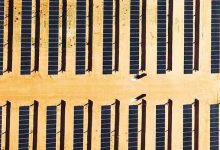Concern about delays and change to rules for grid connections has emerged as the major concern for developers of wind, solar and storage projects in Australia, overtaking the perennial issue of long term investment certainty.
According to a new survey of 60 executives by the Clean Energy Council, grid connection has emerged as the major issue because of a combination of delays, shifting rules, and resulting cost over-runs, and the assessment by the market operator that some networks – such as in north west Victoria – simply don’t have the capacity to accept new projects.
The impact on the industry has already been significant, with some projects delayed or abandoned, others having to turn to technologies such as synchronous condensers to move forward, and contractors caught out by high costs, missed milestone payments, and damages claims.
The collapse of engineering and contracting giant RCR Tomlinson – and its subsequent withdrawal from the solar sector – has been the most high profile of these.
CEC chief executive Kane Thornton said industry executives now rated grid connection and network access as the number one business challenge facing the industry, with policy uncertainty close behind.
“We absolutely acknowledge that grid operators and network businesses are dealing with more applications to connect to the grid than they have ever seen, but project developers need transparency and certainty about how long the process will take and what it is likely to cost,” he said in a statement.
 One executive was quoted as saying: “The approval process for grid connection and network access for new renewable products is very slow”.
One executive was quoted as saying: “The approval process for grid connection and network access for new renewable products is very slow”.
Another said: “The constant changes from the NSPs (networks) and AEMO in relation to the applicable GPS (generating performance standards) for your site are severely undermining confidence currently. This is affecting all stakeholders including owners of NSPs.”
The industry variously blames the delays and restraints on changing goal-posts for the rules, a shortage of expertise for specialist work such as modelling at network, consultancy and developer level, and the physical lack of capacity on the grid.
The Australian Energy Market Operator has admitted there has been hold-ups, and has unveiled its Integrated System Plan, along with its preferred plan to remove blockages in Victoria. NSW is also focusing on the investment needed to allow the huge amount of wind and solar queuing up for connection.
The CEC survey shows that the lack of any policy direction at federal beyond the completion of the current renewable energy target means that this remains one of the key concerns for the industry. Thornton has said previously that subsidies are not needed, but policy certainty is.
“State governments have done their bit to fill the national climate and energy policy void with their own initiatives to encourage clean energy, but the energy and business sectors are still seeking certainty,” he said in the latest statement.
 Victoria, because it is the only state with a legislated target, emerges as the state with the greatest confidence, followed by NSW – which has no target but is facing the inevitable closure of most of its coal fleet over the next 15 years, and Queensland, which also has a 50 per cent target.
Victoria, because it is the only state with a legislated target, emerges as the state with the greatest confidence, followed by NSW – which has no target but is facing the inevitable closure of most of its coal fleet over the next 15 years, and Queensland, which also has a 50 per cent target.
In 2018, the industry had a record year of investment with more than $26 billion of projects completed or underway in 2018. Remarkably, more than 80 per cent of those polled say they expect to increase staff in the next year.
“Investment confidence would be ’10’ if the Federal Government was proactive in supporting the development of renewable energy infrastructure,” one executive said. Federal Labor has unveiled its policies ahead of the next election, expected in May or possibly early March, including a $5 billion “energy modernisation fund” which will include infrastructure.











